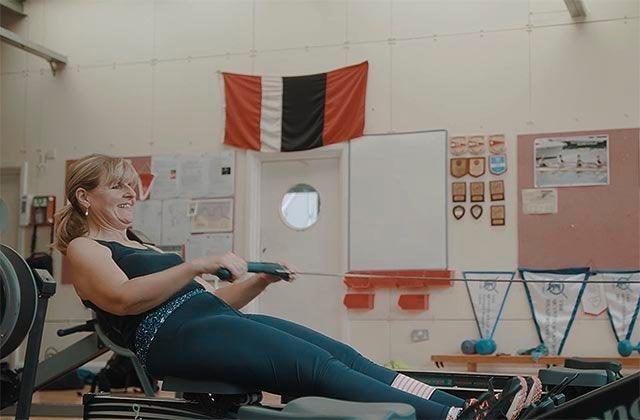In this video, brought to you by Voltarol, personal trainer and motivational speaker Esmée Gummer interviews Jo Moseley of Healthy Happy 50, who started exercising later in life and won’t shy away from any new athletic challenge, be it bodyboarding, surfing, running or rowing a million metres (yes, she’s actually done that!). Exercise has given her a renewed joy and passion for life – but she had to tackle her fear before discovering it.
“Jo is the perfect example of someone who was initially scared to do it,” Esmée explains. “People often have the habit of saying ‘I can’t do that because of this reason or that’. I always tell my clients to try it before you say no. People discover that if they stop saying can’t, they are OK.”
Not just for the body
Exercise is something that we often think of as a purely physical activity: it gets our hearts racing, stretches our limbs and strengthens our muscles.
Exercise is all about working the mind, too. For starters, it’s good for it – studies show it can help reduce everything from stress and anxiety to your chances of getting dementia.
Our attitude towards exercise is also crucial to our relationship with it: feeling insecure after a long break from fitness, or fearful of pain when recovering from an injury, can cause us to develop mental blocks that affect our ability and desire to workout.

Esmée’s story
Few know the power of tackling mental hurdles head on – and winning – better than Esmée Gummer, who currently works as a master trainer at 1Rebel and Fi7ness by Jessica Wright.
Esmée grew up a dancer, pirouetting and tapping through every style of dance. Six weeks before she was scheduled to start at dance college, she went into hospital for a hernia repair. After eight hours of seizures (a reaction to the anaesthetic or one of the other drugs administered), Esmée was left paralysed and told by her doctor that not only was her future as a dancer terminated, she would never walk again.
By the end of her three-week hospital stay Esmée was already taking tentative steps, but it took the best part of a year to get through her rehabilitation – with the help of her former dance teacher. After a year of regaining her strength and muscle control, Esmée decided her future was in fitness.
“I didn’t want to go into it for aesthetic reasons because I wanted to look good. Fitness changed my mentality and helped me get my coordination, balance and strength back. I wanted to share that with other people,” Esmée explains.

The joy of exercise
Central to Esmée’s fitness and recovery philosophy? Having the right mindset, which means never giving up and ignoring that insecure, negative voice inside. She is adamant that with the right mental tools, anyone can discover – or rediscover – the joy of exercise.
“The key thing is to have your mind set on something bigger than the workout, rather than working out to lose weight or get a six-pack,” she explains. “Your body will naturally start to change if you’re working out and eating well, but it takes a lot of time. People don’t understand how long it takes and if that’s the goal, they start to feel demotivated.”
She encourages people to set more realistic and more personal goals and to focus less on those long-term ones. For example, if you’ve just started back up with exercise and you managed two press-ups last week, aim to do three this week. If you ran for a minute straight, next time, try to run for a minute and 10 seconds.

Small challenges
Coming back to exercise slowly after recovering from an injury can be especially difficult for people and is something that Esmée in particular struggled to come to terms with initially.
“You can’t compare yourself to the old you. You’re not going to be able to train how you used to. The old me was training five days a week as a dancer,” she says. “The biggest thing I tell people is to start fresh as a new person. Don’t compare your chapter one to somebody else’s chapter 15.”
Another thing to remember with fitness is that everything takes time. You probably won’t wake up tomorrow and manage 15 push-ups or a 5k run if you haven’t been training. But you can certainly teach yourself to get there. As Esmée puts it: “People feel they’re not good enough to do it. I didn’t wake up one day and do a press-up. I had to teach myself to do that.”
And most importantly? Never say you can’t.
Voltarol Joint Pain Relief 2.32% Gel contains an anti-inflammatory ingredient to help relieve pain and reduce inflammation at the source. Voltarol are experts in body pain, so whether it is joint or muscle pain, Voltarol can help you get back to doing the things you love. Movement can also help reduce your joint and back pain by 25% – did you know, the average person in the UK sits for nine hours a day?
Find out more about how you can take two minutes out of your busy day to move with our Take 2 To Move campaign. Voltarol Joint Pain Relief 2.32% Gel contains diclofenac diethylammonium. For relief of pain and inflammation. Always read the label. Find out more at voltarol.co.uk.